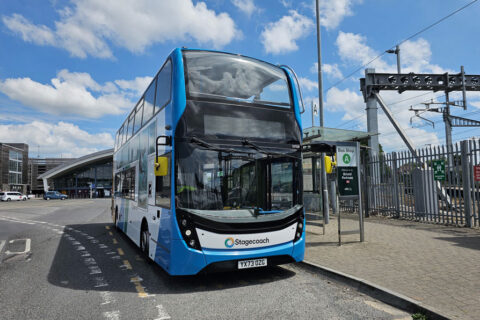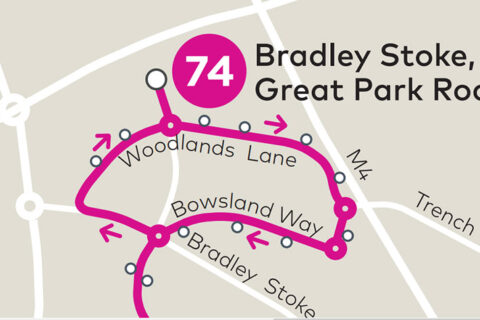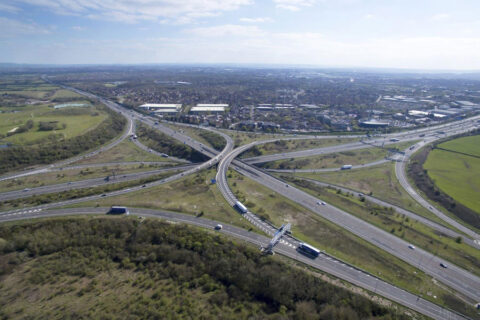A few years ago some work was done on the roundabout at the junction of Winterbourne Road, Great Stoke Way, and Bradley Stoke Way. This work resulted in the significant narrowing of the entry to, and exit from, Great Stoke Way [map].
I infer that there had been a record of “traffic incidents” at this spot, and that the work was done for reasons of safety, backed up with research, experience, and associated reasoning.
I’m interested to learn a) if anyone can confirm a history of “traffic incidents” before the works? and b) if anyone can enlighten me regarding the rationale, which triggered the narrowing those lanes leading into and out of Great Stoke Way.





Note: Archive photo shows Bradley Stoke Way junction, NOT the Great Stoke Way junction that Roger is asking about.
Could be all change again soon as the North Fringe to Hengrove Package bus rapid transit scheme will see northbound Great Stoke Way widened to accommodate a new bus lane.
Or did SGC have budget to use up?
And I would love to know which planning brain had the idea to put rumble strips, usually seen on a motorway, on a roundabout.
Why are you assuming the words ‘planning’ and ‘brain’ were related to any part of Bristol’s road layouts?
It was a bit of a tenuous connection I will admit Wily.
As an aside from this topic but to keep the roads debate going I look forward to the day when someone at SGC has the sense to switch traffic lights either off or to a flashing amber state during non-peak hours
As I understand it, the rationale for narrowing roundabout entrances and exits is quite simple – a general reduction in speed on and around the roundabout. Motorists have a smaller target to aim for – the ‘narrow’ lane – along with an entry / exit angle that is near perpendicular to the roundabout, they have to slow down in order to safely negotiate the rountabout because they have to actually turn as opposed to gently bearing left (assumes a certain degree of common sense by motorists).
The Great Stoke Roundabout isn’t unique. Many of the roundabouts on Bradley Stoke Way had their entrances and exits narrowed a couple of years back.
Thanks to all for the comments.
Craig’s understanding of the rationale he cites, in the absence of comment from a spokesperson from SCG, might easily be close to an official explanation. The “simplicity” of it however, escapes me – as does the speed reduction assumption. To have three entries/exit sets to a roundabout with carriageways of normal proportions and one of narrower gauge seems perverse; likely to increase risk rather than reduce it – and make life even more difficult for cyclists.
I notice an absence of reference to a history of traffic incidents – as I do any reference to robust research. Accepting that this is no proof that associated history and research doesn’t exist; could anon-e-mouse have a point about money burning a hole in SCG’s wallet?
I have no connection to SGC.
There is a nifty little OSM-based map that will show you the accident statistics for anywhere; this junction is at – http://map.itoworld.com/road-casualties-uk#lat=51.52182975838842&lon=-2.5328084064874&zoom=17
Accidents are certainly one of the things that result in SGC doing something (eventually). Given some of the changes to the roads and paths around here, the other may possibly be a combination of the end of the financial year & a liquid lunch.
I wonder if the narrowing of the Great Meadow Way junction was intended to indicate that, despite it’s width, it is actually a minor road? Well, it is at the moment. The slapdash Stoke Gifford bypass will change that. It’s worth noting that the current proposals will widen the northbound carriageway up to a about 20m before the junction, but will retain the narrow roundabout entrances and exits. “Value engineering” at its finest.
I recall that the works to Pear Tree roundabout at the other end of Bradley Stoke Way were supposed to make it safer. They haven’t. It’s still the busiest roundabout in Bradley Stoke and still has five entrances / exits with confusing road markings and impatient motorists. The only change is that the entrances / exits are narrower now, so you get more conflict. Joy.
Is it possible that the narrowing to a single lane on our roundabouts was because there were no road markings (ie arrows) to indicate the correct lane to the motorist and everyone was left to make their own decisions (and not everyone would think the same way).
Arrows exist on the Little Stoke roundabout hence multiple lanes exist as they do on the roundabout near to The Pavillons.
Just a thought
Were these alterations, together with pedestrian operated crossing on Winterbourne Road, carried out in connection with school catchment area changes, in order to make it safer for children walking from BS, SG and LS to and from the school in Winterbourne?